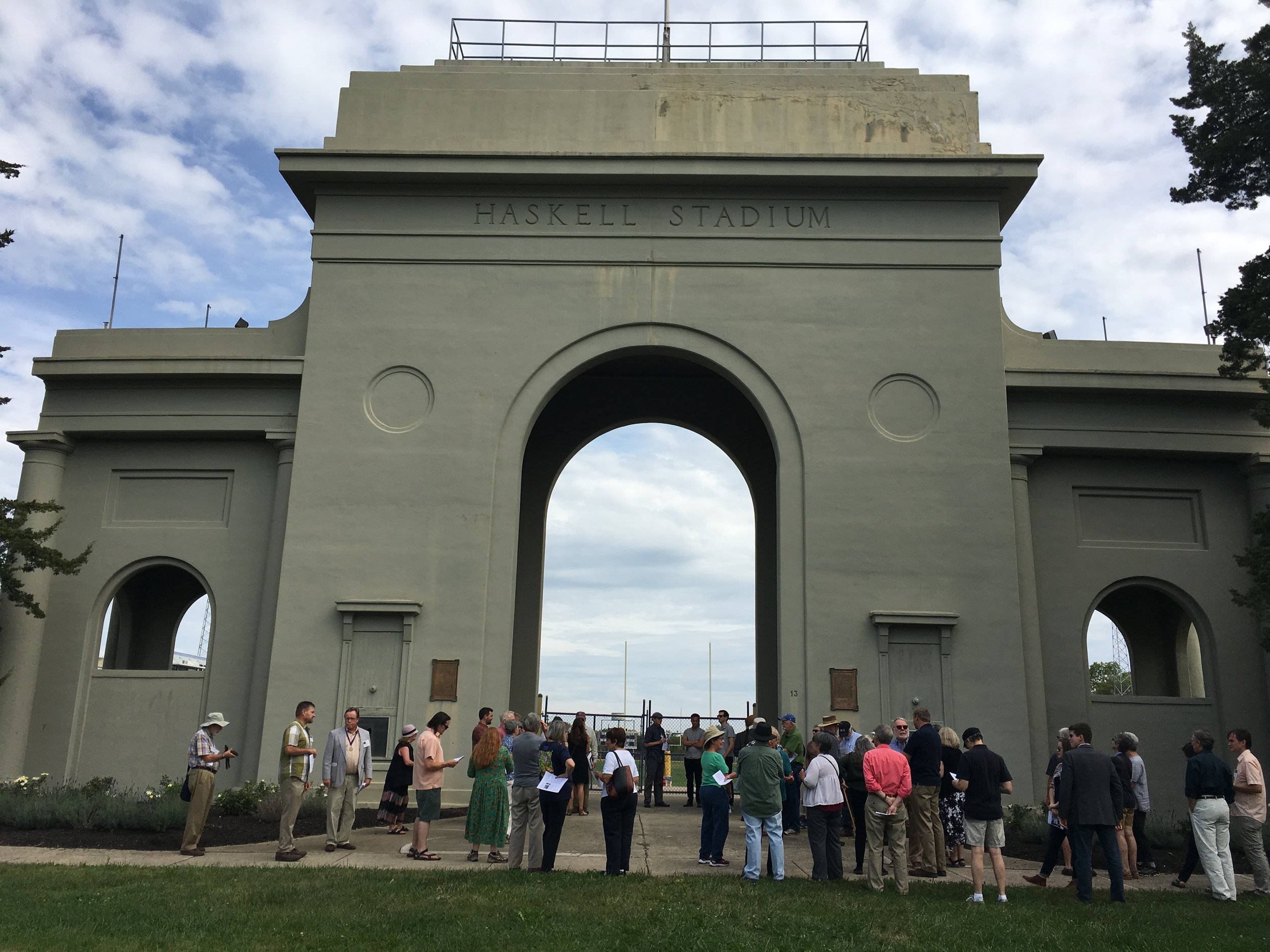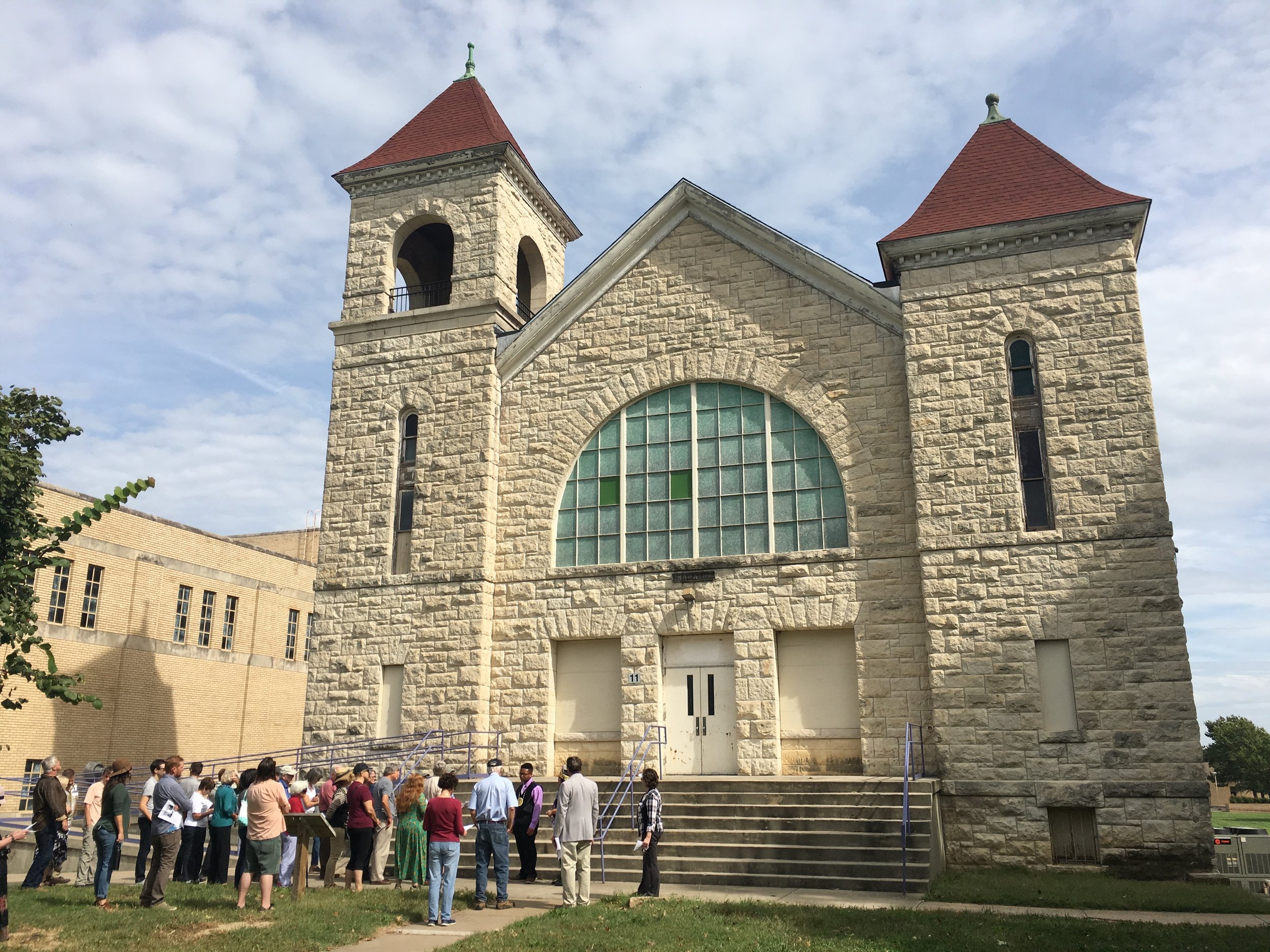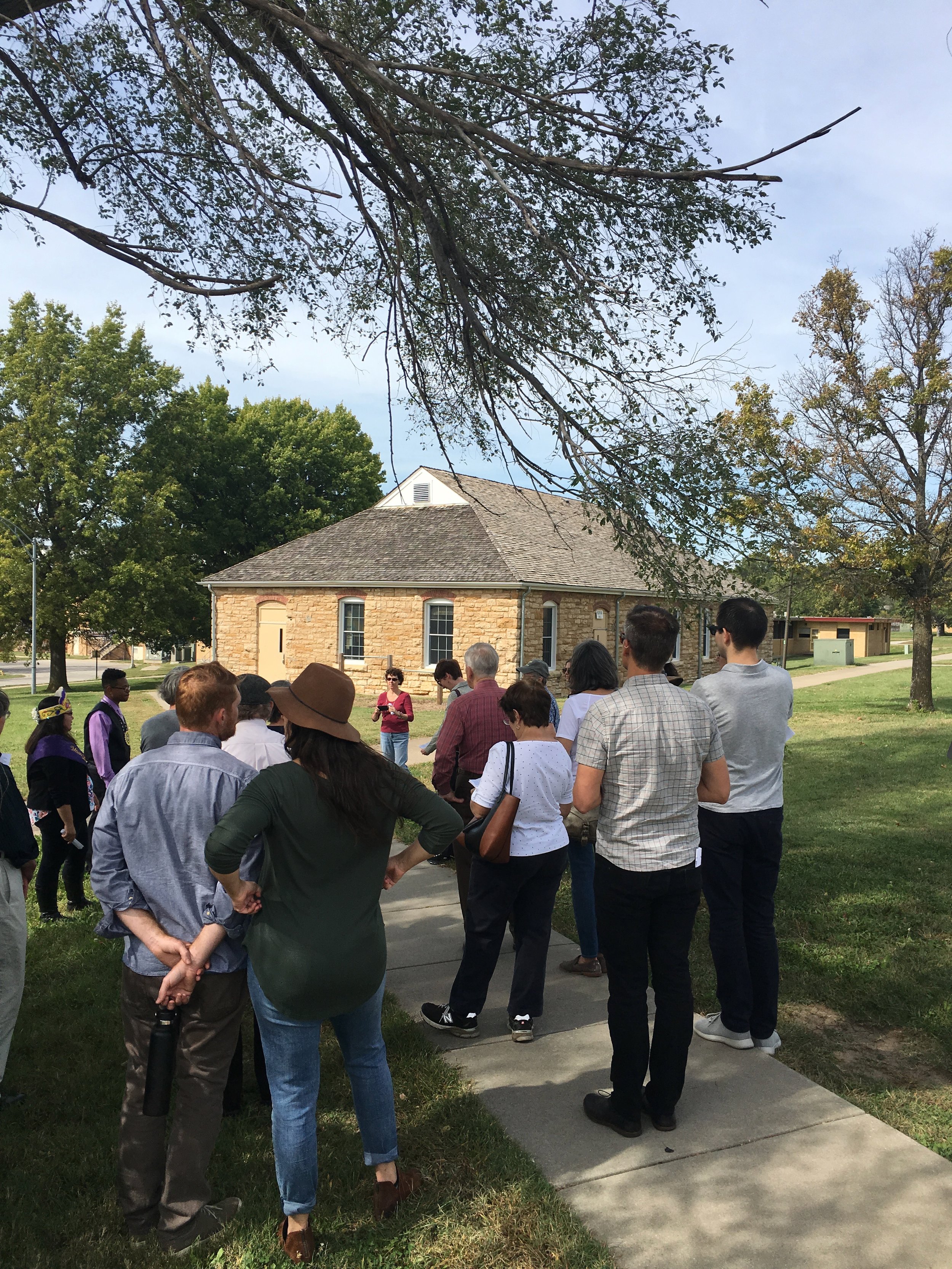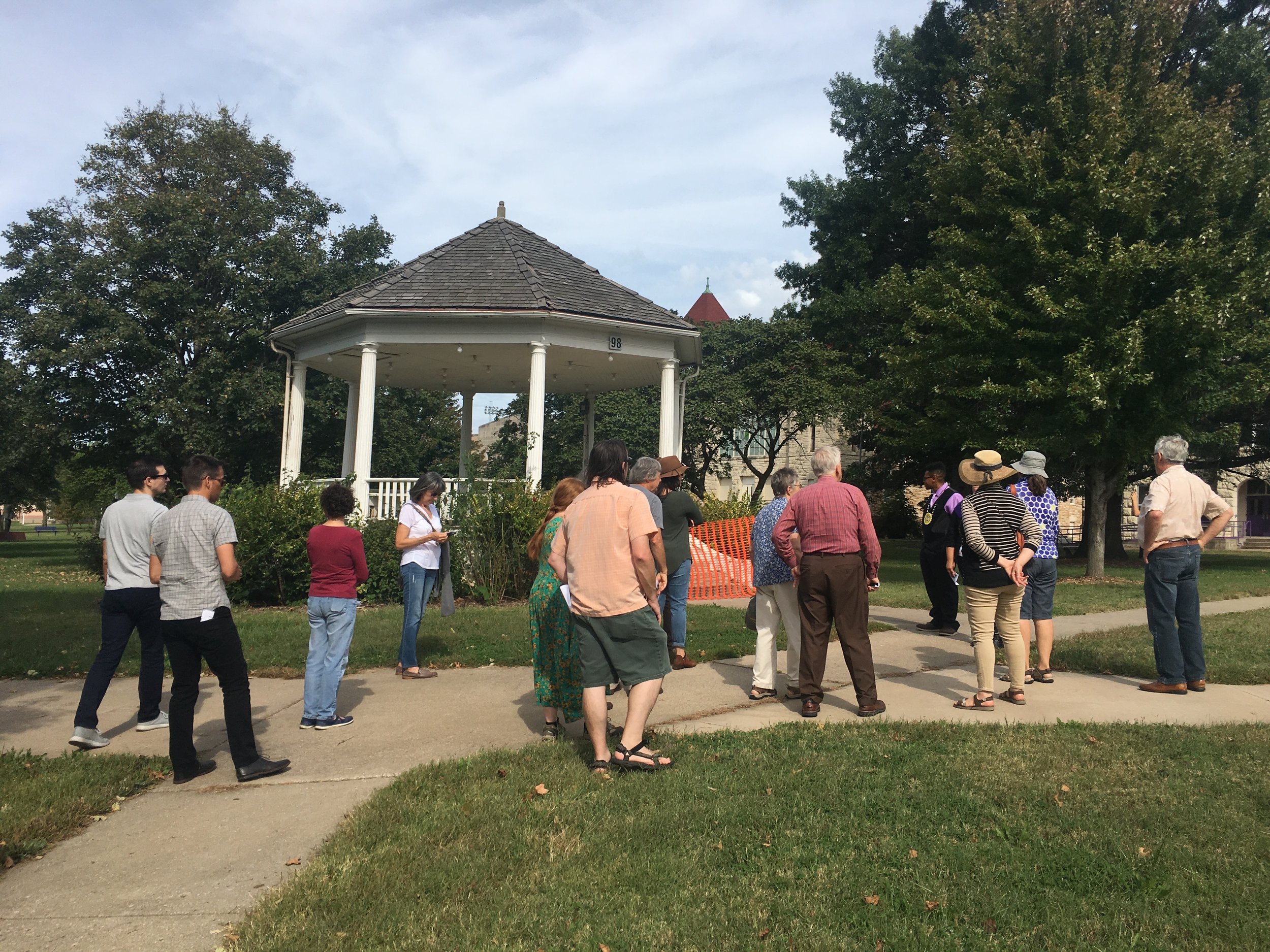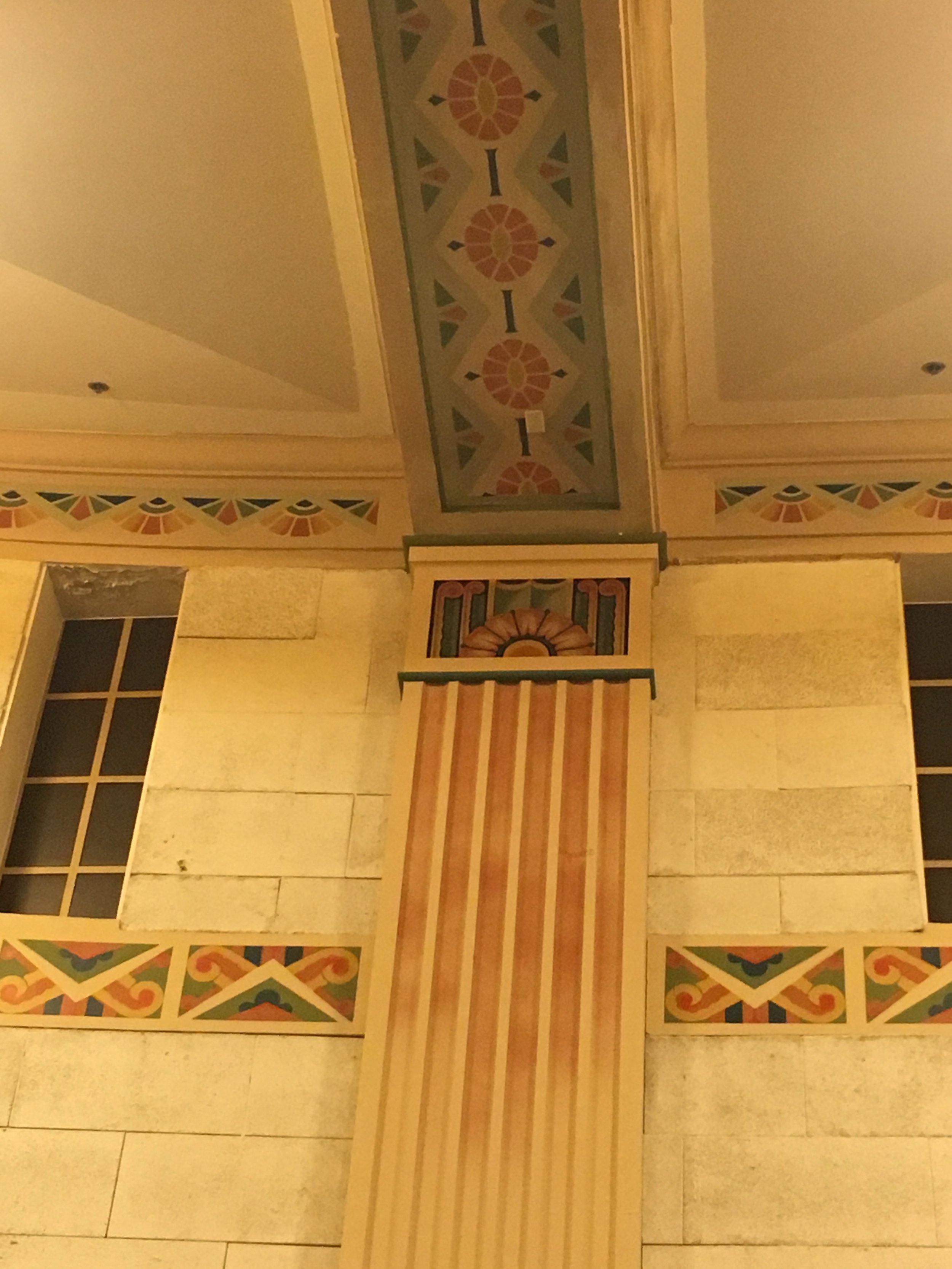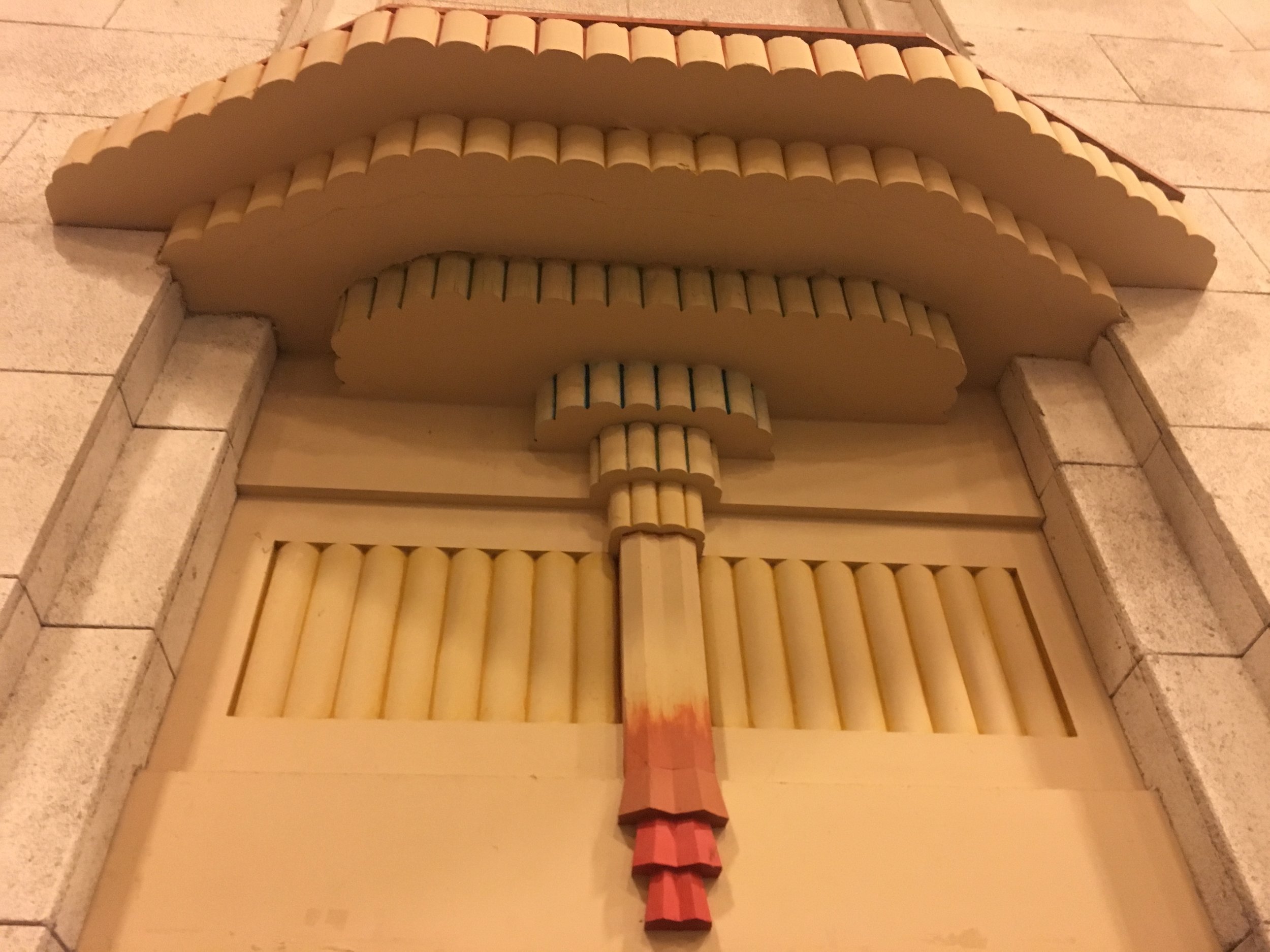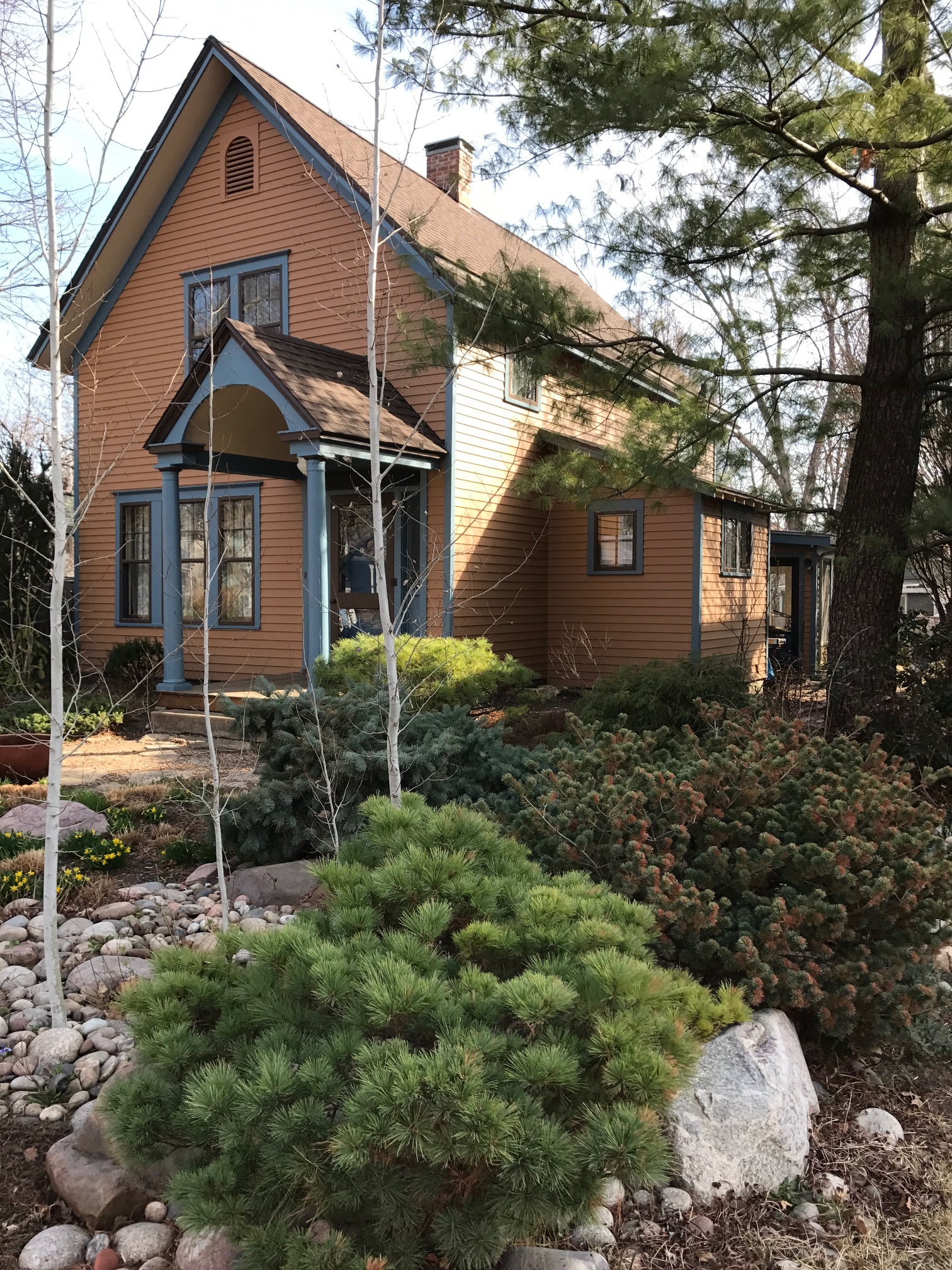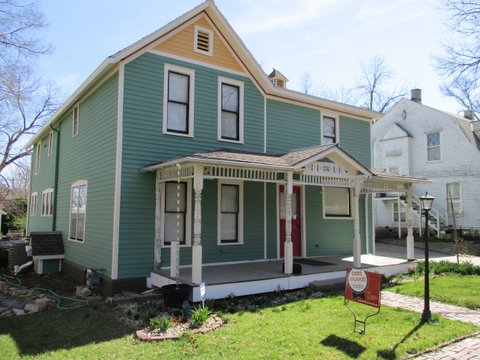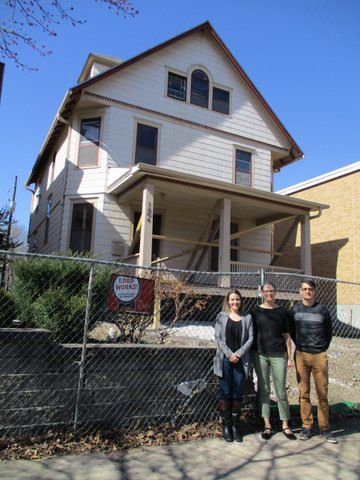When examining building proposals for damaging impacts to historic listed properties, and in particular ones proposed within the urban core, the Lawrence Historic Resources Commission (HRC) is charged with filtering out invasive design species that would be foreign to existing historic patterns if allowed. One invasive critter that requires vigilance is the attached garage.
Core neighborhoods served by an alley system developed a predominant pattern of detached service structures, accessed by the alley, with rear yard space between the service structure and the main house. In the beginning, these structures served as tool sheds and small barns. As motorized vehicles became more affordable, a number of these structures underwent various modifications to become detached garages. Over the years, as infill projects were completed one by one, some but not all recognized and respected this pattern, and built new infill houses with detached one or two car garages.
As newer subdivisions were developed around the urban core, and began to coincide with the phenomenon of most families now being able to afford an automobile, the alley system was scrapped as a planning element, and the attached garage, accessed by a driveway along the side of the front yard and connecting to the street, was born. This distinct change in direction for neighborhood layout could not be more obvious! Have a youngster on a bicycle ride through a driveway-based neighborhood and an alley-based one, and he or she will be able to tell you.
As communities have increasingly documented their core neighborhoods and set up protections like those the HRC is tasked with upholding, positive amenities, based primarily on walkability, have been fostered that some who live in vehicle-based neighborhoods see as desirable. As they, one by one, buy vacant infill lots or properties that are demolished by neglect and propose an infill construction that will allow them to come back, it should be HRC’s mission to stand at the border (using the review process), and say, “ You can come in with this and this, but not that.” There are always exceptions to every rule, but the attached garage is one design element that should face a very steep threshold of approval in core neighborhoods with historic registered properties.
Aside from bringing in an architectural form that is foreign to predominant design patterns in these documented historic areas, the attached garage does create actual damage in at least two distinct ways. Transferring the form from a driveway accessed system to an alley system means the structure, attached to the house and abutting the alley, thereby eliminates the rear yard, a character-defining feature that is a repeated and common pattern in most older neighborhoods. Second, the historic building pattern of a residence with a detached service building breaks the built massing on the property into two separate components. The likelihood of an attached garage proposal exceeding the upper limits of massing found in existing structures in an older neighborhood is great.
Attached garages in older neighborhoods are going to occur, as not all properties in those neighborhoods are listed on historic registers and thus subject to review. It is also possible that some designs using the attached garage concept but with less of a suburban feel could come forward that would provide a rear yard and visually break up the structure’s mass. Those charged with evaluating building proposals that trigger historic review should recognize each opportunity to protect the historic planning patterns of neighborhoods we are making an effort to preserve. If they do not, then little by little, one decision at a time, that invasive species becomes established, and that youngster on the bike begins to assume it was always there.


